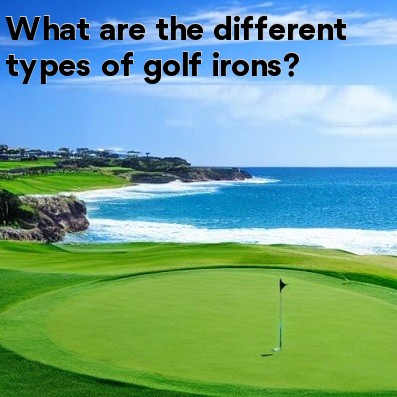
The Different Types of Golf Irons
Golfers use various types of golf clubs to navigate the course, and among these, irons play a crucial role. Irons are used for shorter shots, typically between 100 and 200 yards from the green. They have a flat angled face and are primarily designed for accuracy and control. Let's take a closer look at the different types of golf irons:
1. Long irons
Long irons are numbered 2-5 and are characterized by their lower loft angles, typically ranging from 18 to 26 degrees. They are the most challenging irons to hit due to their longer shafts and low lofts. These irons are useful for shots requiring distance but are less forgiving and require more skill to use effectively.
2. Mid irons
Mid irons are numbered 6-7 and have slightly higher loft angles compared to long irons, usually ranging from 27 to 33 degrees. They are easier to hit compared to long irons and provide a balance of distance and control. Mid irons are commonly used for approach shots to the green from a fairway or rough.
3. Short irons
Short irons include the 8 and 9 irons. They have even higher loft angles, typically ranging from 34 to 48 degrees. Short irons are designed to provide maximum control and accuracy for shots closer to the green. They are commonly used for chip shots, pitch shots, and shots from the fairway or rough.
4. Pitching wedge
The pitching wedge, often referred to as the “P wedge,” is one of the most commonly used irons. It has a loft angle between 48 and 52 degrees, making it ideal for shots around the green. The pitching wedge provides a higher trajectory and increased spin, allowing the player to control the ball's landing and stopping distance.
5. Gap wedge
The gap wedge, or “G wedge,” has a loft angle between that of the pitching wedge and the sand wedge, typically ranging from 50 to 54 degrees. As its name suggests, it is used to bridge the gap between the pitching wedge and the sand wedge. The gap wedge is versatile and can be used for a variety of shots, including full shots, chip shots, and bunker shots.
6. Sand wedge
The sand wedge, or “S wedge,” has a higher loft angle, typically ranging from 54 to 58 degrees. It is specifically designed for shots out of bunkers and soft sand, thanks to its wider sole and increased bounce. The sand wedge allows for easier and more consistent sand shots, helping golfers escape from tricky bunkers with more control.
7. Lob wedge
The lob wedge, or “L wedge,” has the highest loft angle among all the irons, usually ranging from 60 to 64 degrees. It is used for shots requiring maximum height and minimal distance. The lob wedge is commonly used for delicate shots around the green where precision and finesse are essential, such as flop shots and bunker shots.
Understanding the different types of golf irons and their characteristics allows golfers to select the most suitable club for each shot. Having a variety of irons in your golf bag ensures you have the necessary tools to navigate the course effectively and improve your scores.





